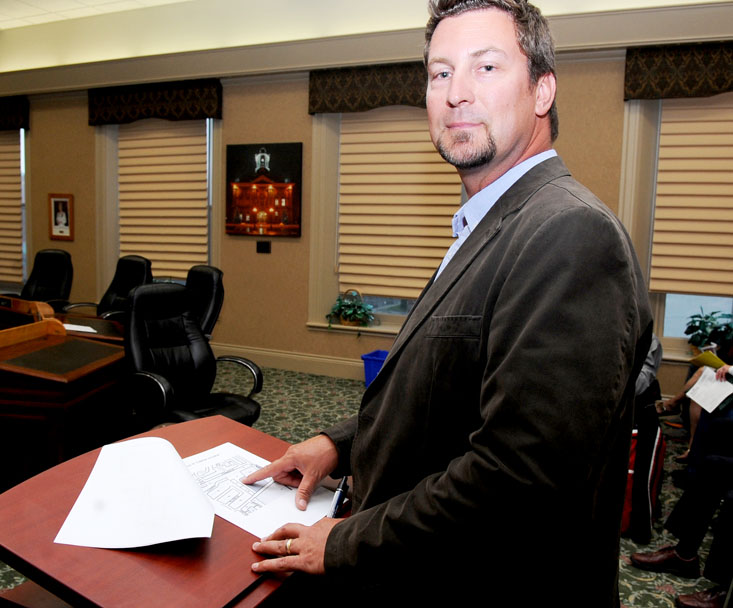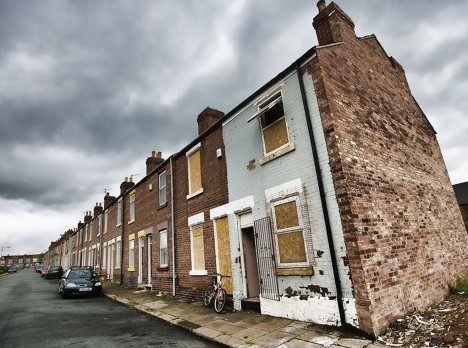
(Developer Matthew Eyre points to his proposed Rockford Forest development on a map in a city staff report.)
The scene in the council chamber Tuesday evening – or rather, the lack of a scene – stood in stark contrast to what took place there in June 2006.
Same development, different time.
In 2006, John Cassell, still known widely as the mayoral candidate who colourfully took on Ben TeKamp and lost in 2003, was hoping to build a subdivision called Deer Trails west of the Health Unit building. The plan included expanding Flanders Road to the east and connecting it a second time to Laurier, forming an inverted “U” shape.
His proposed plan called for one single detached dwelling, eight semi-detached dwellings and 16 townhouses.
At that June public meeting, people complained.
More than 20 opponents raised a series of objections to the plan, including traffic concerns, a loss of privacy and an expected decline in property values should there be townhouses in the neighbourhood.
What stood out was the visceral reaction to the latter.
Fitzsimmons Drive resident John Bonser, speaking for many neighbourhood residents at the time, said he had recently bought a home in the area expecting the zoning would continue to allow only for single-family homes, only to discover that someone now wanted to build “row houses.”
By “row houses,” he probably meant this:

I recall discussing with my editor what I called the class subtext to this debate: middle-class homeowners turning their noses at the prospect of less well-to-do residents moving in next door. You know the tired stereotype: overweight people smoking, drinking beer on the doorstep, raising noisy children and hanging their laundry for all to see.
Another neighbourhood resident complained the new homes would be at the bottom of a hill from his house, allowing such people to look into his backyard.
Cassell's plan ultimately failed for reasons not related to the objections. In fact, Cassell managed to silence those objections by reaching an uneasy compromise that nonetheless stuck.
Developer Matthew Eyre is now proposing to revive the subdivision, under the name Rockford Forest, in the form that emerged from that compromise: four single detached homes, eight semi-detached homes and 11 townhouse units.
It may just be that compromise that afforded Eyre an easier time at Tuesday's public meeting. But the recession of 2008 and the slow march of aging may also have something to do with it.
Back in 2006, when first confronted with objections to all those messy “row houses,” Cassell insisted his target market was seniors. He also looked at his opponents, with a mixture of apology and resignation, and told them town houses are the only thing many people can afford.
Fast-forward to Tuesday evening and the comment by neighbourhood resident Roger Fulford, who told the committee he is a senior hoping to “downsize” and a new home in Rockford Forest might be just what he and his wife are looking for.
“I think this is something we really need,” said Fulford.
There were concerns, of course, and mild objections, but none of the vitriol – or class subtext – of 2006.
So is Cassell's compromise – five fewer “row houses” – allowing this development to proceed anew? Or has Brockville changed enough, economically, since the last decade, to make it harder for neighbours to be haughty about affordable housing?
Have house prices gone up, or incomes gone down, just enough to make the spread of townhouses inevitable, and therefore suddenly acceptable?
Perhaps, in true Canadian fashion, the change was a bit of everything.